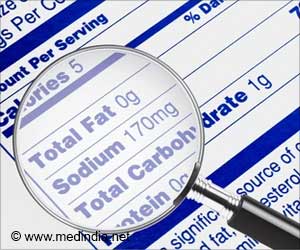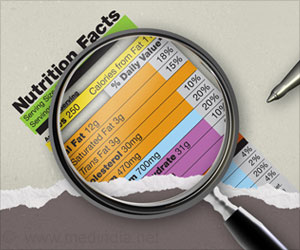- How to read a nutrition label - (https://www.mdanderson.org/publications/focused-on-health/Howtoreadanutrtionlabel.h12-1590624.html)
About
Understanding nutrition labels is crucial for making healthier food choices and managing your diet effectively(1✔ ✔Trusted Source
How to read a nutrition label
Go to source).
Did You Know?
Understanding nutrition labels can help you make better food choices and maintain a balanced diet. #medindia #nutritionlabels
Step Wise Guide to Help You Decode Food Labels
Start with the Basics
Date of Manufacture and Expiry: Always check these dates to ensure the food is fresh and safe to consume. The "Best Before" date indicates the period when the food is expected to be at its best quality, while the "Expiry Date" is the last date the food should be consumed. Consuming food past these dates can pose health risks.
Serving Size: This tells you how much of the product is considered one serving. The nutrition facts are based on this amount. A serving size may not always align with your actual portion size, so adjust the nutrition information accordingly.
Net Weight: Check the total weight of the product. A package might contain multiple servings, so be mindful of how much you consume. For example, if a package contains two servings and you eat the entire package, you need to double the calories and nutrients listed.
Ingredient List and Food Additives
Ingredients: This list shows what’s in the product. Ingredients are listed in descending order by weight. Common allergens include milk proteins, tree nuts, eggs, fish, shellfish, soy, and wheat. If you have allergies or sensitivities, avoid foods containing these ingredients. Additionally, be cautious of ingredients that are hard to pronounce, as they may be additives or preservatives.
Additives: Look out for artificial flavors and colors. Choose products with fewer additives and opt for those with class I preservatives over class II, as they are generally considered safer.
Look out for Nutrition Facts
Energy: Calories per serving are listed here. Remember, lower fat doesn’t always mean fewer calories. Check the calorie content relative to your daily caloric needs.
Fats & Cholesterol: To help reduce your risk of heart disease, select foods that are lower in saturated fats, trans fats, and cholesterol. Opt for foods with healthy fats like unsaturated fats found in avocados and nuts.
Sodium: High sodium intake is linked to high blood pressure. Choose foods that are low in sodium or labeled as “low sodium.”
Carbohydrates: This section includes total carbohydrates, dietary fiber, and sugars. Pay special attention to added sugars, as excessive consumption can lead to obesity and other health issues. Choose foods with high fiber content to improve digestion and maintain overall health.
Protein: Proteins are essential for muscle growth and repair. Look for foods that are rich in proteins to support bodily functions and maintain muscle mass.
Dietary Fiber: Fiber improves digestive functioning and overall health. A higher fiber intake can help with weight management and lower cholesterol levels.
Vitamins & Minerals: Select foods that are rich in various vitamins and minerals. Vitamins A, C, D, E, and minerals like calcium and iron are vital for maintaining health and preventing deficiencies.
Daily Value (DV%)
Guidelines for Daily Allowance: This percentage shows how much of the daily requirement for a particular nutrient is met by one serving of the product. A DV of 5% or less means the food item is low in that nutrient, while 20% or more indicates it is high. This can help you determine if a food is a good source of a particular nutrient.

Decoding the Logos on your Food Labels
- FSSAI: The FSSAI logo on food labels indicates that the product complies with the safety and quality standards set by the Food Safety and Standards Authority of India, ensuring it is safe for consumption.
- ISI: The ISI mark signifies that the product meets the Indian Standards Institute's quality and safety specifications, commonly found on packaged goods to ensure adherence to government standards.
- Agmark: Agmark certification on food products assures consumers that the product meets the quality standards set by the Directorate of Marketing and Inspection, Government of India, ensuring agricultural produce is genuine and pure.
- Fortified: The Fortified logo indicates that the food product has been enriched with essential vitamins and minerals like iron, iodine, and vitamin A, which help address nutrient deficiencies.
- Veg/Non-Veg: The green dot symbol (Veg) indicates the product is vegetarian, while the red dot (Non-Veg) indicates it contains animal-based ingredients, helping consumers make dietary choices in line with their preferences.
- Jaivik Bharat: The Jaivik Bharat logo certifies that the product is organic, meaning it has been produced without synthetic fertilizers, pesticides, or genetically modified organisms, adhering to organic farming standards.
- Vegan: The Vegan logo ensures that the product contains no animal-derived ingredients or by-products, making it suitable for those following a plant-based diet and lifestyle.
- Gluten Free: The Gluten-Free label ensures that the product contains no gluten, a protein found in wheat, barley, and rye, making it safe for individuals with celiac disease (Advance) or gluten sensitivity.
- Recyclable Packaging: Look for the recyclable sign on the packaging to help the environment. Proper disposal of packaging can reduce waste and support sustainability.
Tips for Reading Nutrition Labels
- Compare Similar Products: When shopping, compare nutrition labels on similar products to choose the healthier option.
- Be Mindful of Portion Sizes: Understand that the nutritional information is based on the serving size, not the entire package.
- Watch for Hidden Sugars and Fats: Ingredients like high fructose corn syrup and hydrogenated oils can be indicators of high-added sugars and unhealthy fats.
- Choose Whole Foods: Whenever possible, select whole, minimally processed foods over packaged products.
- Educate Yourself on Common Additives: Familiarize yourself with common food additives and their potential effects on health.
- Check Nutrient Content Against Your Daily Needs: Use the DV% to assess if a product is a good source of essential nutrients you might be lacking.
- Consider Dietary Restrictions: If you have specific dietary needs or restrictions, carefully read ingredient lists and nutrition facts to ensure the product meets your requirements.
- Use Nutrition Labels as a Guide: Nutrition labels are a tool to help you make informed food choices but should be used in conjunction with a balanced diet.
By understanding and utilizing nutrition labels effectively, you can make better food choices and maintain a healthier diet.









